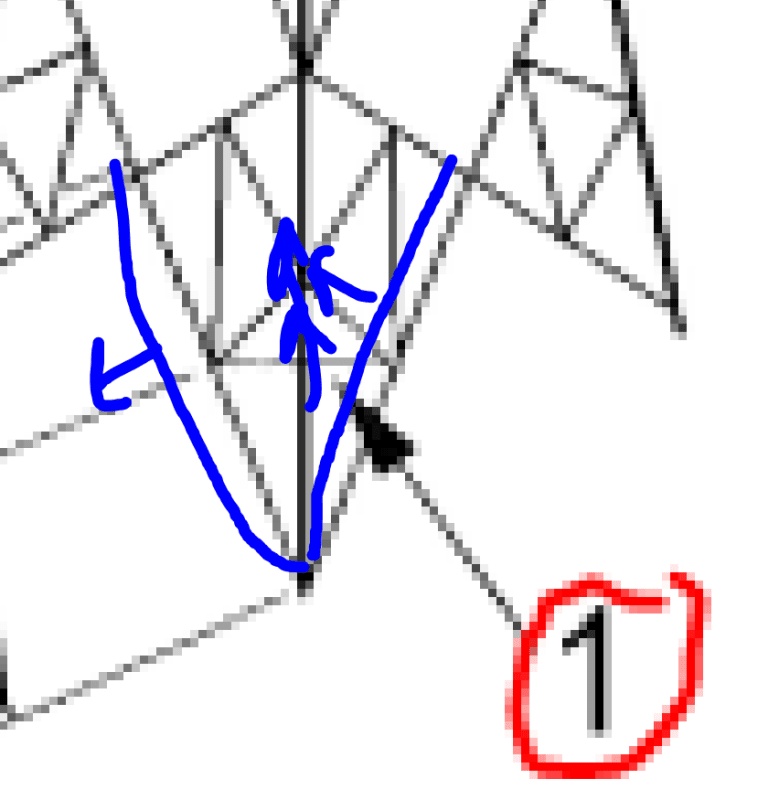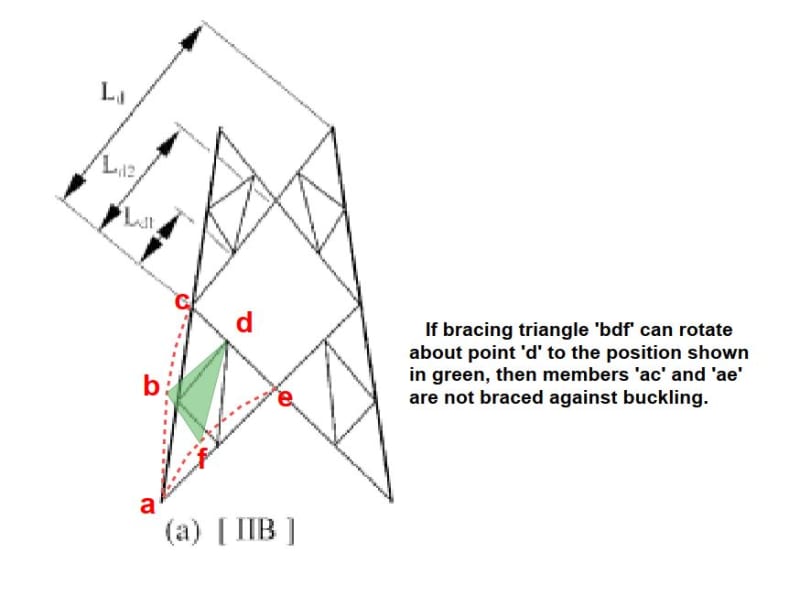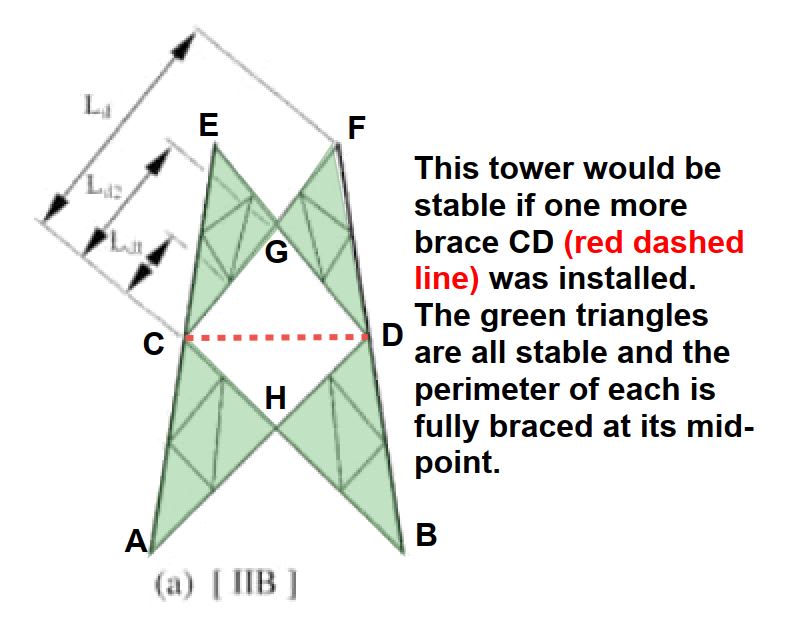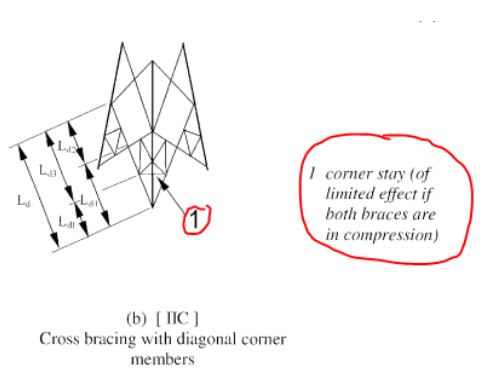I am looking at a steel derrick structure (lattice tower) constructed with tubular members. The point of concern is the unbraced lengths used for the main braces that have secondary braces connected at intermediate points. The two main braces that the secondary brace is connected to can be in compression at the same time.
The EN 1993-3-1 Figure H2(b) (attached to this thread) states that this secondary brace (the code refers to it as a "corner stay") will have limited effect if both braces are in compression. From this note on the figure, it would sound like the secondary brace cannot be used to reduce the unbraced length of the main braces if there both main braces have compression load in them simultaneously. I have a few issues with this note.
1. There is no commentary to explain this note.
2. Even though the two main braces could be in compression at the same time, they may not be very heavily loaded and still have a lot of reserve capacity.
3. Both main braces will be in compression just when the structure is only subjected to dead load (i.e. most of the time).
4. What would be the purpose of having this secondary bracing if it can't be used to reduce the unbraced length of the main brace? The nature of it being a secondary brace will be such that it does not carry much load.
5. Secondary bracing is generally considered "stiff" enough to provide buckling restraint to the main brace if it has a compressive capacity of at least2.5% of the maximum compression force in the main brace.
I don't find this note in any other lattice tower design code or standard (TIA-222, ASCE 10, CSA S37). Can anyone please provide some explanation or a thought experiment on the merit of this note and if it reasonable?
The EN 1993-3-1 Figure H2(b) (attached to this thread) states that this secondary brace (the code refers to it as a "corner stay") will have limited effect if both braces are in compression. From this note on the figure, it would sound like the secondary brace cannot be used to reduce the unbraced length of the main braces if there both main braces have compression load in them simultaneously. I have a few issues with this note.
1. There is no commentary to explain this note.
2. Even though the two main braces could be in compression at the same time, they may not be very heavily loaded and still have a lot of reserve capacity.
3. Both main braces will be in compression just when the structure is only subjected to dead load (i.e. most of the time).
4. What would be the purpose of having this secondary bracing if it can't be used to reduce the unbraced length of the main brace? The nature of it being a secondary brace will be such that it does not carry much load.
5. Secondary bracing is generally considered "stiff" enough to provide buckling restraint to the main brace if it has a compressive capacity of at least2.5% of the maximum compression force in the main brace.
I don't find this note in any other lattice tower design code or standard (TIA-222, ASCE 10, CSA S37). Can anyone please provide some explanation or a thought experiment on the merit of this note and if it reasonable?




